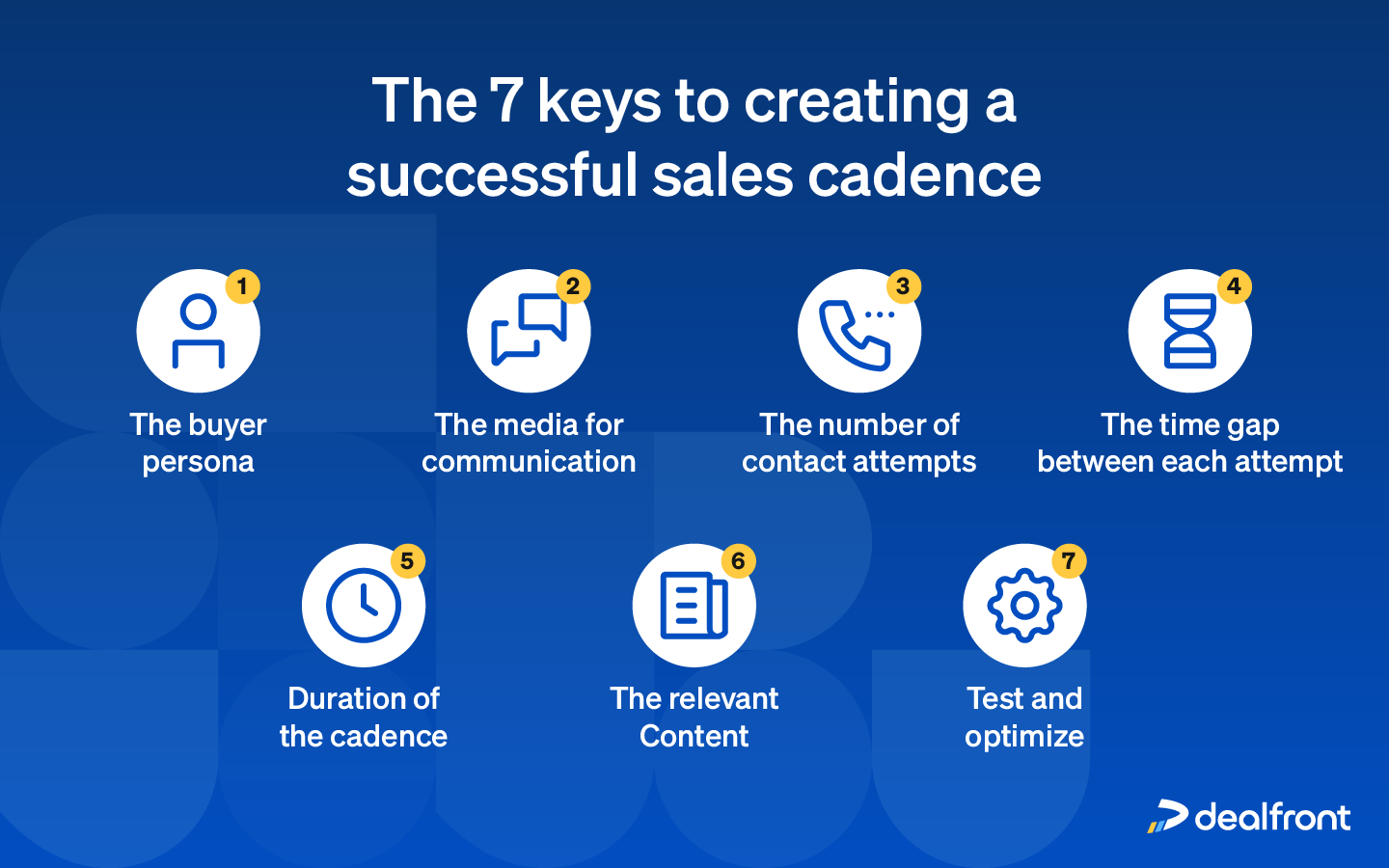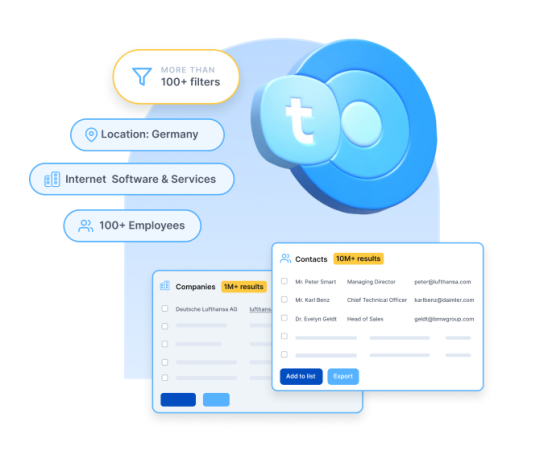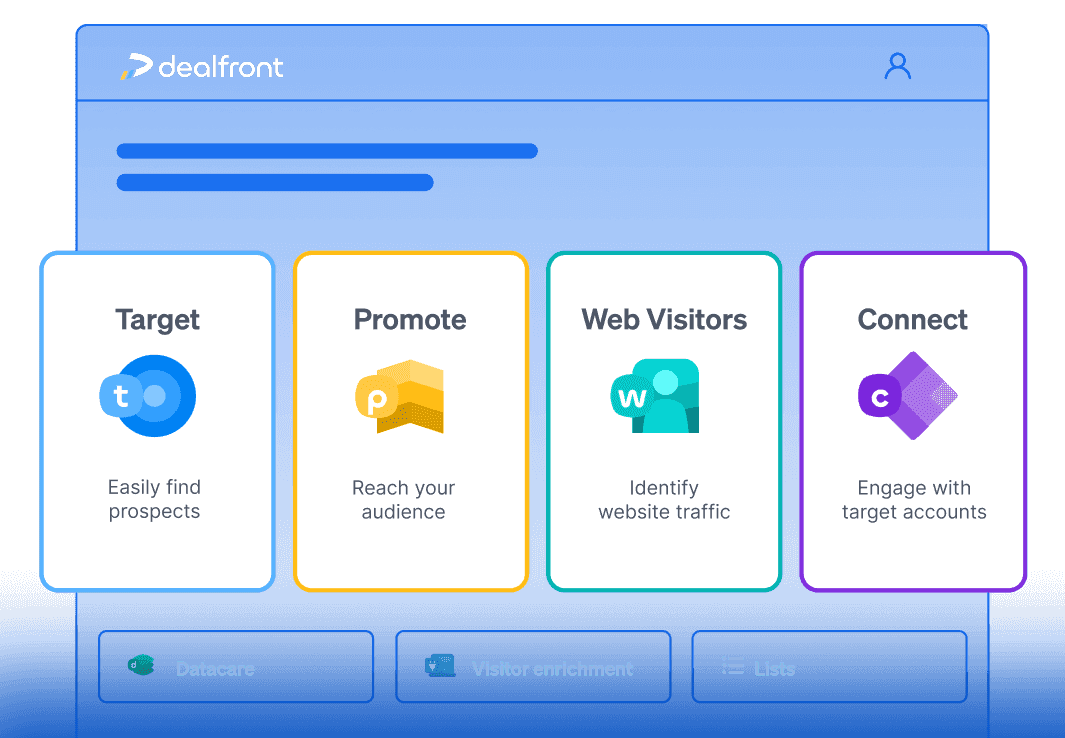Sales prospecting can be the difference between business success and failure. No matter how great your product or service is, you can’t just sit around and expect clients to fall into your lap. With a solid sales prospecting strategy, you can find and connect with the right clients for you.
But, how can you put your sales prospecting ideas into action? With our total guide, you’ll understand how sales prospecting works, why it’s so important to use, and which methods you can use to guarantee successful prospecting for sales.
What is sales prospecting?
Sales prospecting is the process of identifying potential customers or leads who have expressed interest in what you or your company has to offer. It involves researching and identifying individuals or companies that match your target market criteria. Once you’ve done that, you narrow in on them to figure out exactly how much they need you and the best ways to convey that need to them.
Sales prospecting includes cold calling, email outreach, social media engagement, attending networking events, and any other tactic a sales team uses to generate leads.
But how does prospecting in sales differ from lead generation?
Where the goal is the same (finding potential customers), the teams, methods, and processes for lead generation and sales prospecting differ. Both play an essential role in filling your funnel so here’s how they’re different and how you can use both of them to your advantage.
Lead generation
Lead generation is all about finding and capturing potential customers for your business. The lead generation process is normally the responsibility of your marketing team and deals with potential customers who may already have expressed interest.
It’s the pivotal point where you get people interested and gather their information so you can start the sales process. You can do this in a few different ways, including with cold calls or cold emails, gated content like ebooks and reports, or paid advertising campaigns. There is also the importance of reading more about business leads in order to gain a deeper understanding of them.
Sales prospecting
In the gold rush era, prospecting was about finding the best and biggest nugget. Similarly, prospecting in sales means finding the client that most closely fits your ICP (ideal customer profile). Once you’ve identified potential prospects, your goal is to connect with them to ultimately generate new business.
Sales prospecting, as the name suggests, is usually led by sales teams. It involves a lot of footwork compared to the more automated processes of lead generation. There are many ways you can go about prospecting, but where in the journey should you start prospecting sales?
Where does sales prospecting take place within the sales funnel?
Prospects and sales leads are sometimes referred to interchangeably, but they're actually distinct categories. Sales leads express their interest in your product or service and exist at the top of the sales funnel.
The sales prospecting process is a refined version of the lead process that involves investigating further into the potential customer to see if they’re really a good fit. A prospect usually starts as a lead, but not every lead becomes a prospect. Some leads simply aren’t going to meet the criteria to become prospects, even if they show interest.
Sales prospects go through the B2B sales funnel, which is a representation of the process, from first contact with a lead, up to when they become a paying customer. The funnel has multiple stages, each of which represents a different phase of the sales process.
Top of funnel
At the top of the funnel are the untouched leads. At this point in the sales journey, the leads have either been contacted by you or your team or they’ve interacted with marketing materials you've put out.
Untouched leads become leads once you make contact with them or they reach out to you. As soon as you start exchanging information about your business or service, you move on to the middle of the funnel.
Middle of the funnel
In the middle of the funnel, you qualify prospects along a temperature scale (cold, warm, or hot) depending on their level of interest and compatibility with your company.
A salesperson presents their pitch to the prospect. This pitch should be the culmination of your sales prospecting strategies, showing off your knowledge of exactly how you can help them. Be prepared to counter any objections that come up based on what you already know about their pain points.
Bottom of the funnel
The bottom of the funnel is where it gets real. Before the deal closes, you’ll enter a negotiation phase with the prospect where you work out the details of the sale.
Once you finish the negotiation phase, your deal is done and, ideally, you walk away with a new customer.
Why is sales prospecting important?
Sales prospecting matters because it helps you find potential customers and increase your sales. A sales prospecting plan helps you refine your leads so you can expand your customer base and grow your revenue.
By using best practices in sales prospecting you can actively seek out potential customers. By doing so, your business can stay ahead of the competition, establish relationships early on, and position itself as a company that your clients can trust, ultimately giving you a market advantage.
Comparing inbound and outbound sales prospecting
Both inbound and outbound sales prospecting strategies aim to find and engage potential customers by identifying potential leads, qualifying their interest, and eventually closing a deal.
The main difference between inbound and outbound prospecting lies in the approach and initiation of contact. Inbound prospecting relies on attracting leads by producing valuable content and establishing a strong online presence to nurture leads who have already shown some interest. By contrast, outbound sales prospecting methods involve reaching out to potential customers directly, regardless of their prior interaction or awareness of the business.
Both strategies have advantages: inbound prospecting attracts highly interested leads, whereas outbound prospecting allows you to be proactive by targeting specific individuals or companies that fit your ICP. Employing both together can produce a comprehensive sales prospecting strategy. If you decide to use only inbound or outbound prospecting, your choice should be informed by your business's goals, resources, and target audience.
Outbound sales prospecting
Outbound sales prospecting involves a more direct approach in which you proactively reach out to potential customers. Outbound prospecting typically includes tasks such as cold calling, email outreach, direct mail, and attending industry events. With these measures, you can initiate contact with individuals or companies even if they have not expressed prior interest in the business.
Like with most marketing techniques, there's a traditional outbound sales prospecting process that tends to work. You can adapt these steps as needed to fit the specifics of your business and target audience:
Outbound prospecting: This is the hands-on process of seeking out potential sales prospects. You can work through a cold call list, send out emails or mailers, or show up at events for some one-on-one time to try and get people engaged.
Prospect list: Once you generate your leads from the prospecting efforts, then you can begin to put them through a qualification process. This is when you weed out companies that won’t be a good fit so neither of you end up wasting time.
Discovery call: The discovery call is the first impression your sales team will make on prospecting clients. It’s also a good opportunity to find out if you’re a good fit for each other. Before this call, you should already know about the prospect, including the company's name, size, and needs.
Sales cadencing: In this stage, you’re maintaining consistent personal contact, but without overdoing it. For outbound sales, you can determine the appropriate amount of contact based on the qualification factors you already have at your disposal.
![Sales cadencing is vital for successful outbound sales prospecting.]()
Invite sent: When the sales cadencing has paid off and the prospect seems ready to make the transition to paying customers, you should extend an invitation to further the conversation.
Opportunity opened: If they accept the invite, then the opportunity is ready to be opened.
Alignment with an account executive: Once the sales prospect is qualified and there’s reason to think they're on their way to becoming customers, the salesperson should begin to align with an account executive. These are advanced sales professionals with a proven ability to close a deal.
Inbound sales prospecting
With inbound sales prospecting, you create valuable content, optimize marketing strategies, and utilize the channels you have available, such as websites, social media, and search engines. By leveraging your existing brand awareness, you can attract potential customers who already have an interest in your business to your inbox.
As you do this, you attract leads and generate interest from potential customers who can then become prospecting clients. That is, instead of you reaching out to a sales prospect, they see the marketing you’ve put out into the world and come to you. Here's a breakdown of what the process generally looks like:
Discovery call: A discovery call with inbound marketing happens once a lead reaches out and contacts you for more information. During the discovery call, the sales professional starts to feel them out to determine their qualification level.
Sales cadencing: You don’t want to hound a potential customer, but you also don’t want them to slip through your fingers due to inattention. As described above, sales cadencing involves finding the sweet spot of follow-up frequency for prospecting sales leads.
Demo call: During a demo call, the inbound sales team can show off the features and benefits of a product or service to the potential customer. This is your opportunity to address the sales prospect's specific needs identified during the discovery call stage.
Proposal negotiation: This is when you finalize your proposal and start negotiating. There may be a back and forth with the prospect, and the ease of the resolution will rely on how well you understand their perspective.
Deal won/lost: If the proposal negotiation went well, then it’s time to celebrate! Whether you close the deal or not, you get started all over again once it wraps up.
Comparing B2C and B2B sales prospecting
While there are many similarities between B2C and B2B sales, it’s important to be aware of the differences, especially when it comes to sales prospecting.
B2C sales prospects typically buy for themselves to solve a specific, often urgent, need. They complete the sales journey on their own and like to feel in control of their purchasing decisions, which are often made swiftly and with the influence of emotions.
As B2B sales are conducted on behalf of an entire business, there are a large number of decision-makers and stakeholders that are involved in purchases. Because the purchase risk is higher, B2B sales prospects require a longer sales cycle, during which they can build trust and ensure that the product is the right fit for them. This is where the sales prospecting process is ideal, as it allows you the time to build a relationship with your prospecting clients.
How do marketing and prospecting in sales work together?
Marketing is a crucial first step in any sales prospecting plan. With inbound sales particularly, marketing is what gets the prospect’s attention in the first place. Without good marketing, you won’t have leads to cultivate and turn over to a customer relationship manager.
What are marketing integrations?
Marketing integrations can automate much of the sales prospecting process. Here are some examples:
CRM (customer relationship management) integrations can help you move customer data from the initial sales rep to the customer relationship manager.
Social media integrations streamline social media campaigns and help with publishing posts to reach the right audience.
Analytics integrations provide you with useful metrics on who's visiting your website.
Content integrations can help you publish marketing materials on your company's blog.
Advertising analytics measure the success of your marketing campaigns.
Website analytics provide insight into how prospects engage with your website. This can help you personalize future conversations.
You can use these marketing integrations as sales prospecting tools. The key is to choose integrations that align with your marketing team's specific goals and needs, allowing for the best and most efficient data sharing, automation, and targeted outreach.
What are marketing’s prospecting efforts?
Marketing has a number of sales prospecting strategies that are intended to capture the attention of potential customers. These strategies include:
Content marketing
Search engine optimization
Social media marketing
Email marketing
Events and webinars
Affiliate marketing
Paid advertising
Eleven surefire sales prospecting techniques
Getting sales prospecting right will always take work but there are ways you can improve your chances of success.
Here are 11 ways you can use sales prospecting tools and strategies to win deals in no time:
1. Hone your sales pitch
A sales pitch needs to be impactful. It should be carefully crafted with a concise message designed to introduce your product or service to those who can benefit from it and demonstrate its value.
Coming up with a compelling sales pitch requires a lot of effort and attention to detail, but investing that time and energy will pay off in the long run.
2. Use impactful sales prospecting email templates
Many of us get near-daily emails from businesses that we’ve learned to tune out. Your job is to make sure your potential customers open your emails and read them instead of sending them straight to the trash. You can do that by building a winning template with a solid foundation.
You can then use your sales prospecting email examples as the bones of communications that are personalized for each client.Please note that different legal requirements for email marketing may apply depending on where your B2B prospects are located.
3. Master cold calling
Similar to cold emails, most people just aren’t thrilled to receive cold calls. They either won't answer a call from a number they don’t recognize or they're ready to end the call as soon as they pick up. In fact, a study by the Kenan-Flagler Business School shows that cold calls have a success rate of only 2.5%. Here are some tips to make sure your call ends up in that 2.5%:
Do your research on the prospect ahead of time
Have a strong introduction
Establish a connection
Tailor your pitch to the company or prospect
Make sure your selling proposition is unique
Don’t waste time
Avoid triggering sales resistance
Close the call with a good call to action
Follow up on the call
Cold calling can be an uphill battle, but once you have it down, it can be a useful sales prospecting tool. Please note that different legal requirements for cold calling may apply depending on where your B2B prospects are located.
4. Identify pain points
Finding out a company’s pain points should be part of the background research in your sales prospecting strategy. The pain points are the specific issues that the company is struggling with that your product or service can help them resolve. You should already know what their problems are before they even open their mouths to speak.
The quicker you can identify the problems, the sooner you will be ready to tell them exactly how you can help. Making someone’s life easier is a solid way to ensure that they'll be receptive to what you're trying to sell them.
You can identify a company's pain points using market research, social media monitoring, website analytics, and case studies from similar companies in the same target market, as well as sales prospecting software.
5. Boost referrals
One good client that trusts and respects you can breed many more. Not only are referred sales prospects usually pre-qualified leads since they tend to come from the same industry as existing clients, but they have a higher conversion rate thanks to the pre-existing trust.
You can encourage and even incentivize referrals by nurturing your relationships with existing customers and offering rewards programs.
6. Leverage social media
LinkedIn is a social media site built for professionals. Its search features make it ideal for seeking out the specific demographics of your ideal customer. LinkedIn even gives you the ability to differentiate between normal and high-quality prospects by using information on the platform to determine if someone is a decision-maker for their organization.
You can also utilize the industry groups and communities on LinkedIn to scope out entire groups of like-minded companies in the right industry. Once you’ve found the groups that might need your product or service, you can start reaching out to individuals.
If you're willing to pay a premium, LinkedIn offers a subscription-based Sales Navigator tool. This sales prospecting software is specifically designed to allow sales professionals to track leads, though it can also recommend leads and help you streamline lead management.
7. Refine your outreach
Outreach campaigns are an age-old tactic for prospecting, and the ability to run successful campaigns can pay off in dividends. Good outreach involves making sure your interactions are meaningful and that you’re building relationships with the prospects most likely to end the sales cycle on a positive note.
There’s no right way to do outreach. Take your cues from the sales prospect, and personalize everything.
8. Be great at following up
Outreach and follow-up go hand in hand. Part of good outreach is the follow-up, or not letting the relationship you built erode from lack of attention. Make sure to build upon your sales prospecting email templates instead of relying on them - building relationships through personalization is essential at this stage.
You should aim to maintain constant but not overwhelming contact throughout the prospecting process. It helps to stay up to date on what their company is going through so you can ask insightful questions related to their pain points and reveal how you can help them through those challenges.
9. Be prepared with information
When a prospect is ready to make a purchasing decision, provide them with all the information they could need. Not only should you be ready to answer their questions, but be prepared for them to look for outside confirmation that they're making the right decision.
Social proof, such as testimonials or reviews, will reassure them, so make sure you have that information readily available on your landing pages and homepage. You can also share reviews on social media.
10. Don’t forget direct mail
The online world is competitive, so don’t overlook the physical world when brainstorming sales prospecting ideas. A 2022 Direct Mail Industry Report shows an average open rate for direct mail of at least 90%, which dwarfs the open rate for email. Sending out physical mail to even a select list of your most high-quality prospects can make sure they keep you in mind.
And who doesn’t love a gift? Fruit baskets are a classic for a reason. Or better yet: chocolate.
11. Use the power of video
Traveling back to the modern world—you can’t forget video as a thriving platform for prospecting. YouTube, Instagram Live, Snapchat, Facebook Stories, and TikTok are all platforms that pull in hundreds of millions of active users. Not only do people show up to watch videos on those platforms, but they keep coming back.
Video is a fantastic medium for building connections and getting noticed. And if you don’t think you or anyone else on your sales team has the star power to stand out, there’s always influencer marketing.
So to recap our 11 sales prospecting tips:
Hone your sales pitch
Use impactful sales prospecting emails
Master cold calling
Identify pain points
Boost referrals
Leverage social media
Refine your outreach
Be great at following up
Be prepared with information
Don't forget direct mail
Use the power of video
Strengthen your sales prospecting plans with Dealfront
Everyone needs a little help now and then. Dealfront offers you specific sales prospecting tools like Target to help you find new customers. Target provides you with extensive filters with which you can find out your Total Addressable Market (TAM) and identify the buying center in relevant companies.
Here are some examples of what you can gain by using Dealfront:
An extensive selection of over 100 unique filters that allow you to pinpoint ideal customers
Company profiles that give your sales team what they need to evaluate new sales prospects
Real-time alerts for buying signals like website visits, mentions in the news, and trigger events
Accurate and up-to-date contact data for decision-makers
AI-powered technology to help expand your customer base
Targeted advertising campaigns
If you need tools to help streamline your sales prospecting efforts, Dealfront is a solution worth considering.
Setting yourself up for sales prospecting success
Choosing a multi-channel approach puts the power of choice in the hands of your prospects and gives you the chance to personalize your outreach. Engagement strategies that are tailor-made boost your team’s chances of landing meaningful interactions and ultimately converting sales prospects into customers, complementing your efforts to buy leads effectively!
At the end of the day, sales prospecting is all about choosing the right outreach channel at the right time to reach the right prospecting clients. So, make sure you have all the information you need when prospecting for sales and discover untapped customers with Dealfront.








